Since its beginning, Google and its eponymous search engine have had one goal: to provide users with accurate, relevant, and informative search results. The search platform has evolved over the years, with the company adding features and functionality. Today, machine learning and artificial intelligence (AI) technologies have made Google incredibly powerful, delivering a wide variety of online resources to users when they complete a search query. One of the most important parts of the Google search result experience is the so-called “knowledge graph”; in internet marketing strategies, leveraging this critical part of the search puzzle correctly is a recipe for success. Here’s how.
What is the Knowledge Graph?
In simple terms, the Google Knowledge Graph is really two different, but related, things. First, it is a collection of data compiled and analyzed by Google to improve the quality of search results for users. In fact, the search engine company is in the process of building the world’s largest database of facts, using information gleaned from every search conducted on its platform. Google focuses on authoritative sources to collect data, including resources like news media sites, the CIA World Factbook, Wikipedia/Wikidata, and more to gather and interpret information across subjects. Google also analyzes other factors, including directory listings and social media activity, to make determinations between search queries and information relevance. This first part of the Knowledge Graph is hidden but is working hard in the background to deliver results for search users.
The second part of the Graph is both easier to see and easier to understand. For any given search query, the user is presented with a range of resources in search results. Referred to as the Knowledge Graph Card or Graph Panel, this information includes images, links, snippets, reviews, and many more tidbits of knowledge. Ideally, these diverse information resources are relevant to the search user’s query, and most importantly, they are context-specific to that query.
Harnessing the Power of the Knowledge Graph
For any internet marketing strategies to produce the desired results, it is important to keep one fact in mind: the vast majority of web traffic originates from online search queries. In fact, HubSpot pins the number at 80% of all traffic comes from search users seeking specific information about a product or company.
As a business owner, you want information about your company and its products or services to be found easily – helping to drive business growth. The Google Knowledge Graph Panel is the key to unlocking your potential. In this Panel, your company’s business hours, location, contact details, and images are displayed. How, then, can digital marketers create a situation where this information is displayed?
There are three major elements Google uses to decide which information is displayed in the Panel and whether that information is a good fit for a given search query:
- User intent – determining what, exactly, a user is searching for.
- Semantic search – using algorithms to parse context, synonyms, and natural language processing to understand search queries.
- Entity indexing – comparing search queries to the Knowledge Graph information database to match queries with relevant information.
By keeping these factors in mind when developing website content, digital marketers can gain a valuable edge on competitors, all but ensuring that users will find the information they need when conducting an online search.
Optimizing Web Content for the Knowledge Graph
Creating content that is relevant for search users is a multi-faceted process that uses optimization strategies both for users and the Google search algorithm. When this process is followed, the chances of an appearance on the Knowledge Panel is greatly improved. Google provides a range of tools to make the optimization process easier, but the process begins with developing easy-to-read and informative content right from the start.
To develop engaging content, there are a few time-honored strategies to employ, including writing content that is easy to read and rich in detail. Other tactics include:
- Adding bulleted lists
- Using subheadings to break up large blocks of text
- Focusing on user intent – what are readers looking for?
Next, to add authority, take advantage of business-oriented directories. List your business first by claiming a Google My Business listing, then add profiles to industry-specific directories, the Yellow Pages, and similar sites. Be sure to include “NAP” – the name, address, and phone number – of the business in each listing. Google interprets these listings, helping build relevance and authority of a given web property. An extra advantage of business directory listings is that many of the directory sites offer customer reviews, which are invaluable in brand-building. They also send signals to Google’s search algorithm, letting the search engine know that the business is legitimate.
Because the Google Knowledge Graph pulls data from Wikipedia and Wikidata, it is a great idea to create pages on each of those platforms. While this part of the equation is not necessary, the value added by this step can certainly improve a business’s visibility in Knowledge Panels.
Finally, take advantage of “behind the scenes” search optimization, using meta tags and the schema markup code to help Google’s algorithm understand what your company’s site is about and what it offers. This improves the search engine’s ability to properly index information, ultimately delivering superior search results to users. The best aspect of meta tags and schema markup is that these tools are often underutilized by your competitors, and in internet marketing strategies, anything that helps your company stand out is worth the effort.
About Neilson Marketing Services
Since 1988, Neilson Marketing has been implementing innovative marketing solutions and strategies for our clients in all areas of marketing. Contact us today at (866) 816-1849 to put our talent, expertise, and vast resources to work for you. Let’s make things happen, together!

